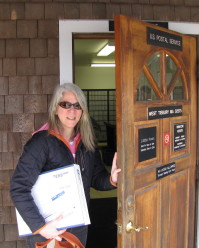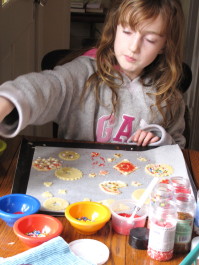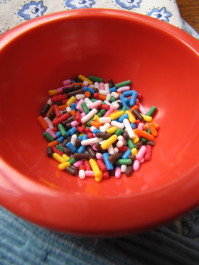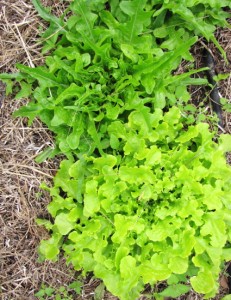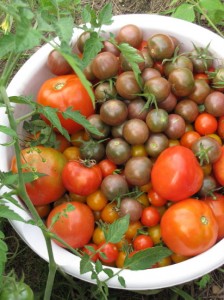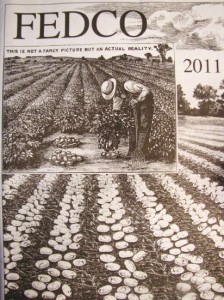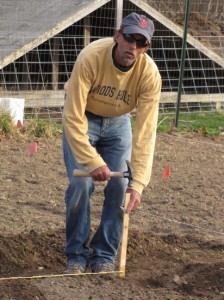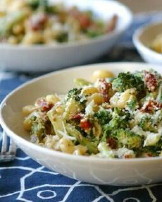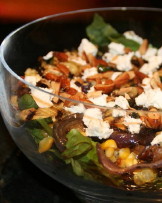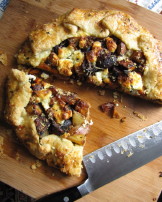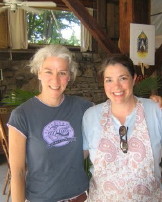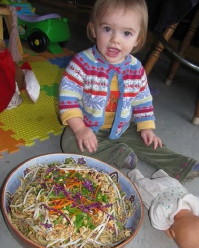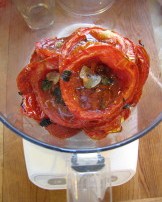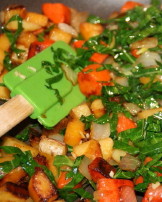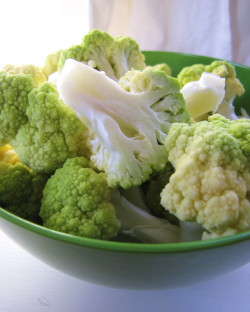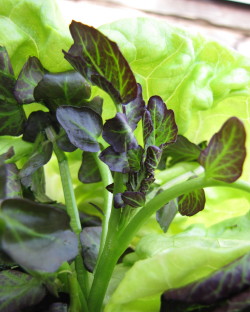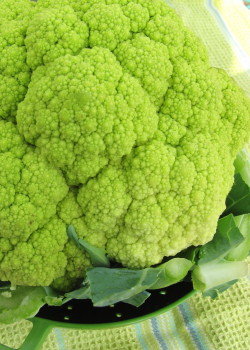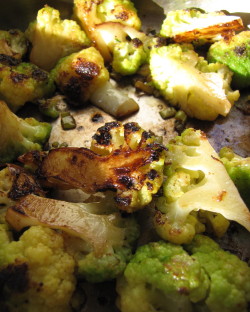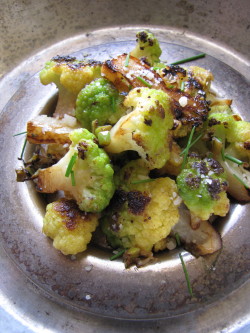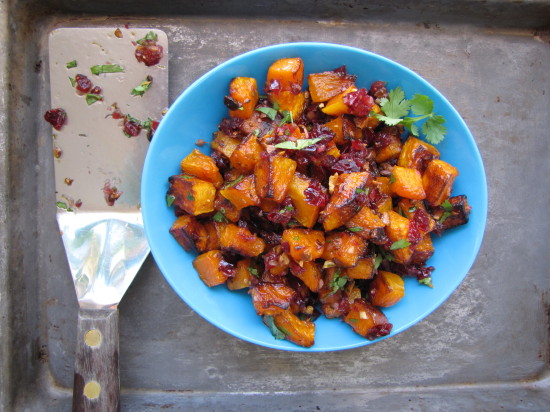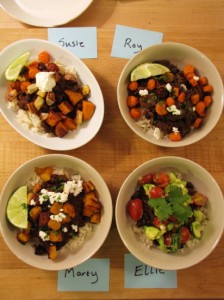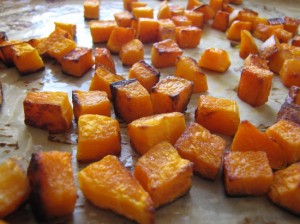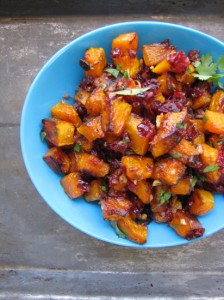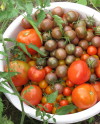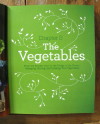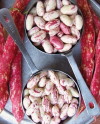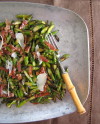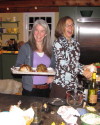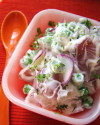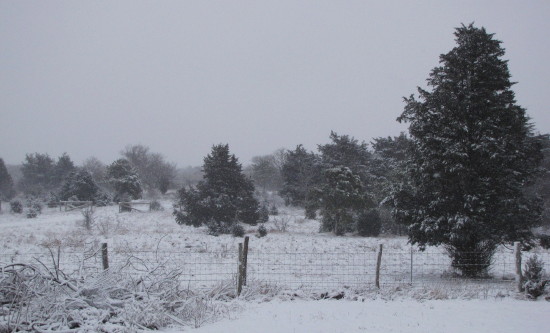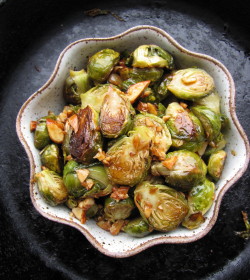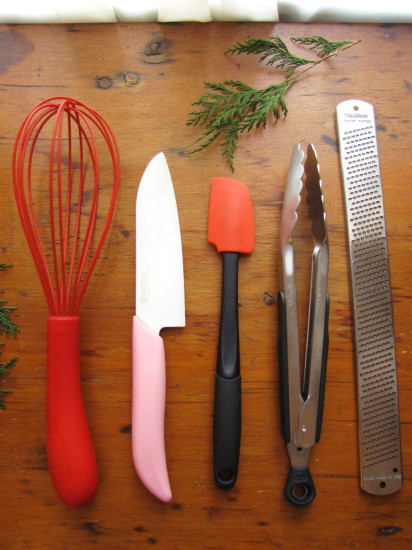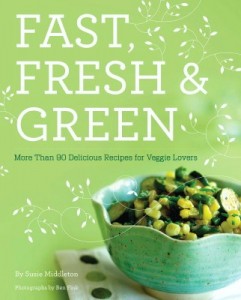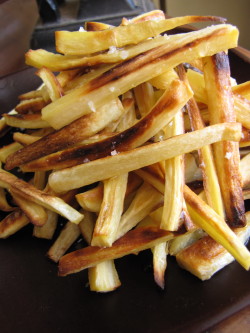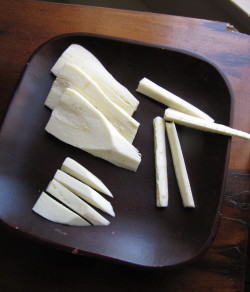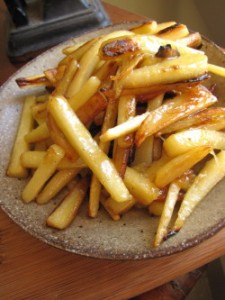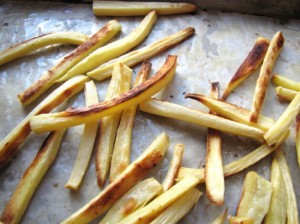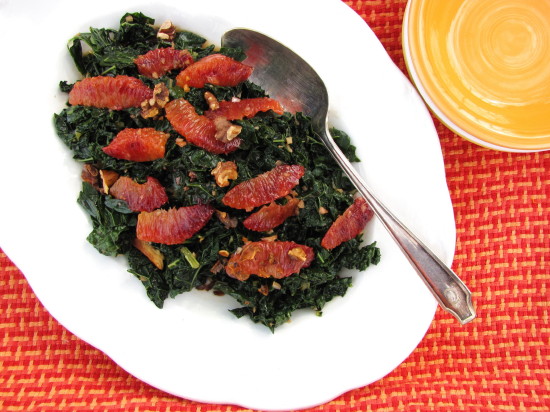 The weather is seductively warm and balmy here today. We’ve hung the wash out on the line, started clearing brush in the yard, and snipped forsythia branches to force indoors. I know it’s going to turn freezing again this weekend, but I’m hoping we don’t get any more of that awful “wintry mix.” I think this is something the weathermen have dreamed up especially for the New England coastal islands this winter. Every time a big storm’s on the way, we watch the news expectantly, hoping to hear that we’ll awake to a beautiful blanket of snow the next morning. Instead, we always get the same news: “Stockbridge, you can expect 4 bazillion inches of snow. However, you folks down there on the Cape and Islands can expect a wintry mix: Sleet, freezing rain, ice.” Ugh. Instead of bright white, we get dull pewter.
The weather is seductively warm and balmy here today. We’ve hung the wash out on the line, started clearing brush in the yard, and snipped forsythia branches to force indoors. I know it’s going to turn freezing again this weekend, but I’m hoping we don’t get any more of that awful “wintry mix.” I think this is something the weathermen have dreamed up especially for the New England coastal islands this winter. Every time a big storm’s on the way, we watch the news expectantly, hoping to hear that we’ll awake to a beautiful blanket of snow the next morning. Instead, we always get the same news: “Stockbridge, you can expect 4 bazillion inches of snow. However, you folks down there on the Cape and Islands can expect a wintry mix: Sleet, freezing rain, ice.” Ugh. Instead of bright white, we get dull pewter.
Since I require bright color to keep me happy, I make up for the weather with vegetables. One of my favorite color combos is deep green and bright orange. This week at the grocery I spotted big bunches of leafy Tuscan kale right across the aisle from a bin of blood oranges, and thought bingo! What a great combo—a truly colorful wintry mix.
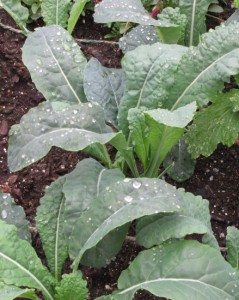 I’m surprised I haven’t written much on the blog yet about Tuscan kale, because it’s one of my favorite leafy greens, and we grew a lot of it last year, too. Unlike many leafy greens, Tuscan kale doesn’t bolt (go to flower), so you can keep harvesting from one plant for many weeks. It’s even better in the kitchen, because it has a much silkier texture and a less mineral-y flavor than regular curly kale. It’s lovely in soups, pastas, and gratins, but makes a versatile side dish, too.
I’m surprised I haven’t written much on the blog yet about Tuscan kale, because it’s one of my favorite leafy greens, and we grew a lot of it last year, too. Unlike many leafy greens, Tuscan kale doesn’t bolt (go to flower), so you can keep harvesting from one plant for many weeks. It’s even better in the kitchen, because it has a much silkier texture and a less mineral-y flavor than regular curly kale. It’s lovely in soups, pastas, and gratins, but makes a versatile side dish, too.
If you want to cook (or grow) Tuscan kale, there’s just one problem. You will have to memorize a roster of names this green goes by so that you don’t miss it. When I first encountered this kale a few years back, I understood it to be Cavolo Nero, or black kale. Now it seems to be marketed most often as Lacinato; though you will also see it labeled Dinosaur kale to appeal to kids. I just stick with Tuscan kale. The good news is, despite the name confusion, it’s relatively easy to identify this kale by its looks. The leaves are long, straight, and quite narrow—and they have a distinctive webby, bumpy pattern on them.
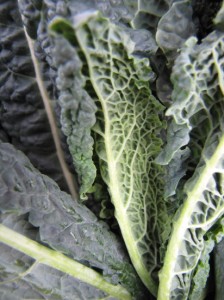 When you get your Tuscan kale home, rinse the leaves, wrap them in a damp dish towel, cover with a big zip-top bag, and they’ll keep very well in the fridge for several days. You’ll need to pull or cut the woody stem out and chop the leaves before cooking. I don’t like the texture of rubbery, undercooked kale (of any sort), so I always cook my kales (Tuscan included) in boiling salted water just until they lose their unpleasant chewiness. This takes between 4 and 6 minutes for Tuscan kale. Taste a leaf after a few minutes and keep tasting so that you’ll know when the texture has changed. Drain the kale well and press excess moisture out. Then toss it with sauces (in or out of the sauté pan) or use in a gratin or pasta. (No need to pre-cook it if using it in soup.)
When you get your Tuscan kale home, rinse the leaves, wrap them in a damp dish towel, cover with a big zip-top bag, and they’ll keep very well in the fridge for several days. You’ll need to pull or cut the woody stem out and chop the leaves before cooking. I don’t like the texture of rubbery, undercooked kale (of any sort), so I always cook my kales (Tuscan included) in boiling salted water just until they lose their unpleasant chewiness. This takes between 4 and 6 minutes for Tuscan kale. Taste a leaf after a few minutes and keep tasting so that you’ll know when the texture has changed. Drain the kale well and press excess moisture out. Then toss it with sauces (in or out of the sauté pan) or use in a gratin or pasta. (No need to pre-cook it if using it in soup.)
For the recipe I’ve included here, the colorful blood oranges (easily replaced with regular oranges) inspired a sweet and tangy sauce that includes my two favorite flavors with dark greens—maple syrup and balsamic vinegar. (Greens need vinegar or some other acid to cut through the earthy tones.) A generous hit of garlic completes this dish, which would be tasty with roast chicken or pork, or even with creamy polenta for a light veggie dinner.
 Tuscan Kale with Orange-Maple-Balsamic Sauce
Tuscan Kale with Orange-Maple-Balsamic Sauce
This recipe calls for segmenting a blood orange or orange—and it also calls for a tablespoon of the citrus juice. So segment your fruit first (over a bowl to catch the juices) and you can use some of the juice in the sauce mix. The segments will also continue to give off juice as they sit; feel free to include those juices in your final dish, too.
___________________________________
1 tablespoon maple syrup
1 tablespoon balsamic vinegar
1 tablespoon fresh blood orange or orange juice
1 large bunch (about 10 to 11 ounces) Tuscan kale
kosher salt
1 tablespoon extra-virgin olive oil
1/2 tablespoon unsalted butter
1 1/2 to 2 teaspoons minced fresh garlic
big pinch crushed red pepper flakes
1 blood orange or small orange, peeled and segmented
2 tablespoons coarsely chopped toasted walnuts or pine nuts
_______________________________________
In a small bowl, whisk together the maple syrup, balsamic vinegar, and blood orange or orange juice. Set aside.
Fill a Dutch oven or other 4-quart pot two-thirds full of water. Add two teaspoons salt to the water and bring it to a boil.
Remove the ribs from the kale by grabbing the rib with one hand and ripping the two leafy sides away with the other hand. (Or use a paring knife to slice along the stem to cut it away from the leaves.) Discard the stems and chop the leaves into bite-size pieces.
Add the kale leaves to the boiling water and cook for 4 minutes. Taste a leaf—if it still feels tough or a bit rubbery, continue to cook the leaves for 1 to 2 minutes more.
Drain the kale very thoroughly in a strainer in the sink. Press down on the kale to remove some excess liquid. (You can use a folded over dishtowel if the kale is too hot to touch.) Let sit for a minute and then transfer to a mixing bowl. Put the blood orange or orange segments in a separate smaller bowl.
Meanwhile, in a small nonstick skillet, heat the olive oil and butter over medium low heat. When the butter has melted, add the garlic and the red pepper flakes. When the garlic begins to simmer, cook for just about 1 minute longer (do not let the garlic brown). Stir in the maple-balsamic-orange mixture and turn the heat up a bit to bring the mixture to a simmer. Simmer just briefly—about 30 seconds—and remove the skillet from the heat. Spoon about 2 teaspoons of the sauce mixture over the citrus segments. Pour and scrape the remaining sauce over the kale, season with a pinch of salt, and stir well.
Arrange the kale on a warm serving platter, garnish with the blood oranges, and drizzle over any juices or sauce left in both of the bowls. Sprinkle the toasted walnuts over all and serve right away.
Serves 3 as a side dish.


